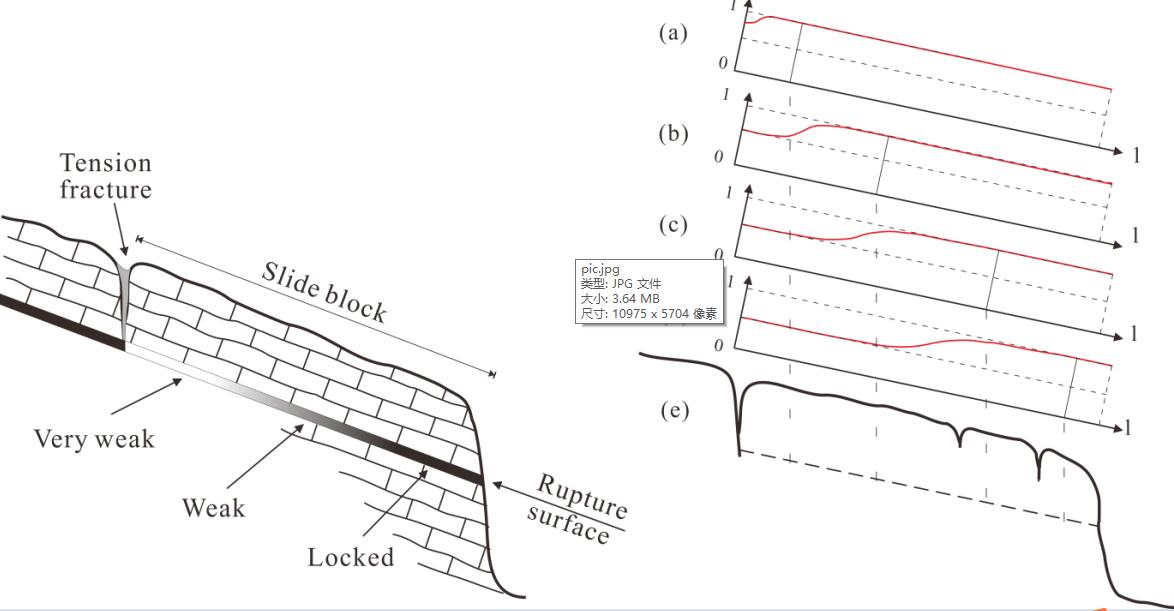Tang H, Zou Z, Xiong C, et al. An evolution model of large consequent bedding rockslides, with particular reference to the Jiweishan rockslide in Southwest China[J]. Engineering Geology, 2015, 186: 17-27.
Abstract
Strata consisting of massive, dipping layers of hard rock interbedded with thin, soft interlayers are common in Southwest China, and this structure is conducive to the formation of consequent bedding rockslides. The huge Jiweishan rockslide is an example that mobilized 5.6 million m3 of massive, lower Permian limestone that was stratigraphically situated above a weak, 30 cm-thick layer of bituminous shale with a downslope dip of 21°. Field data and historical observations indicate that the rupture surface of this rockslide weakened gradually from the rear, upper part to the front. This evidence includes (1) a decrease in the thickness and areal extent of fracture-parallel calcite veinlets along the thin rupture zone. (2) the development of a wide, vertical tension fracture at the upper boundary of the slide block, about 50 years before the catastrophic failure; (3) a succession of small collapses that migrated from the upper to the lower parts of the slide block in the decade before the massive failure. This type of landslide is accordingly termed an advancing consequent bedding rockslide (ACB rockslide). An equation was developed to simulate the mechanical behavior of the rupture surface as a function of position and time. Finally, a computational model that incorporates this equation was used to simulate the evolutionary history using realistic mechanical parameters. The simulation results show how the size of an upper “driving block” progressively enlarges at the expense of a lower “ locking block” that restrains the slide mass, until the locking block becomes so small and weak that failure occurs. Good agreement between the simulation results and field data support the proposed evolution model, including the calculated size of the locking block prior to failure and the width of the upper tension fracture.
Keywords: Consequent bedding rockslide; Jiweishan rockslide; Landslide evolution model; Landslide formation; Weakening of rupture surface
 |

